FTA provided key technical and financial support for the strategy
Bamboo is extremely versatile. Its sturdy, wood-like nature makes it useful in construction, and it is also a source of paper, packaging, furniture and fabric. It can be used to produce biofuels, charcoal and crafts, as well as stick-based products like curtains, mats, toothpicks, incense sticks and skewers. It is also a source of fuelwood and fodder.
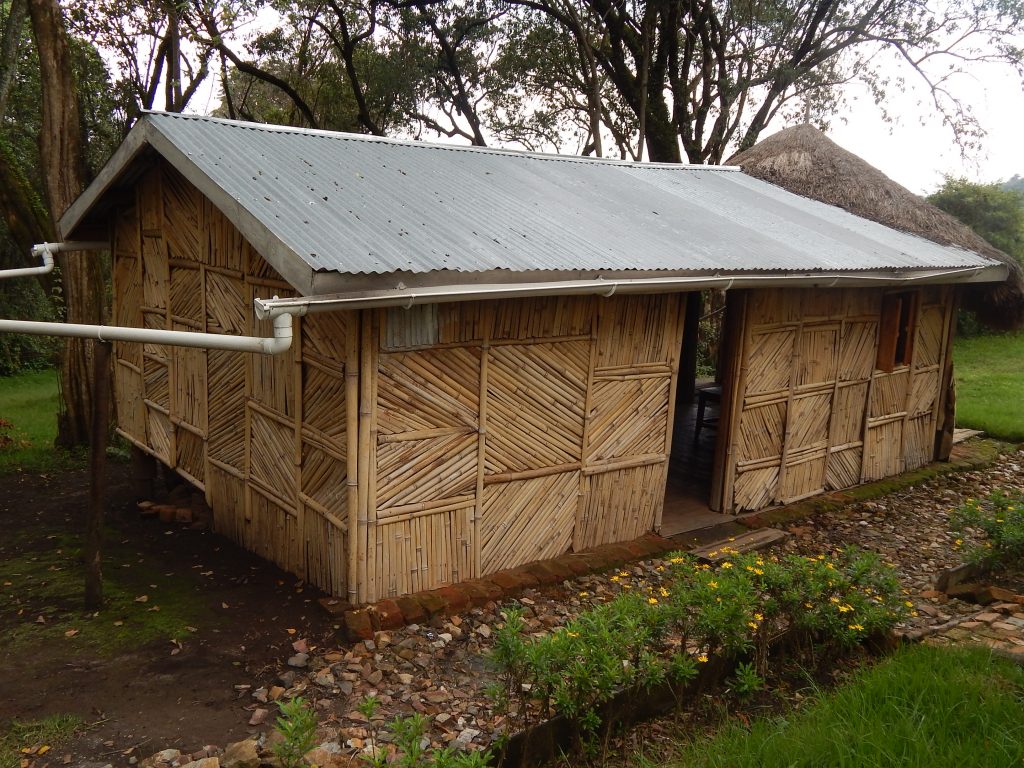
As one of the fastest-growing plants in the world, it is a major carbon sink. It acts as a windbreak and its extensive root systems help control soil erosion, prevent flooding and landslides, retain moisture and raise water tables, thereby reversing desertification. Various iconic animals, including panda, gorilla and monkeys, rely on bamboo for food and shelter. Managed sustainably, it could help many countries reach their global land restoration, climate change and sustainable development commitments.
Yet it is often seen as the poor cousin to timber – viewed as less durable and with few market opportunities.
Uganda has 55,000 hectares of bamboo, including species that can be used for everything from fodder and fuel to furniture and flooring. But, despite high demand for bamboo as a construction material, few farmers are planting the crop, and the country is missing out on a global market worth an estimated USD 60 billion.
“Bamboo has huge potential in terms of timber substitute products, energy products, fiber products, furniture and crafts, as well as soil and water conservation, and climate change mitigation and adaptation,” said Michael Malinga, Uganda National Coordinator for the International Bamboo and Rattan Organisation (INBAR).
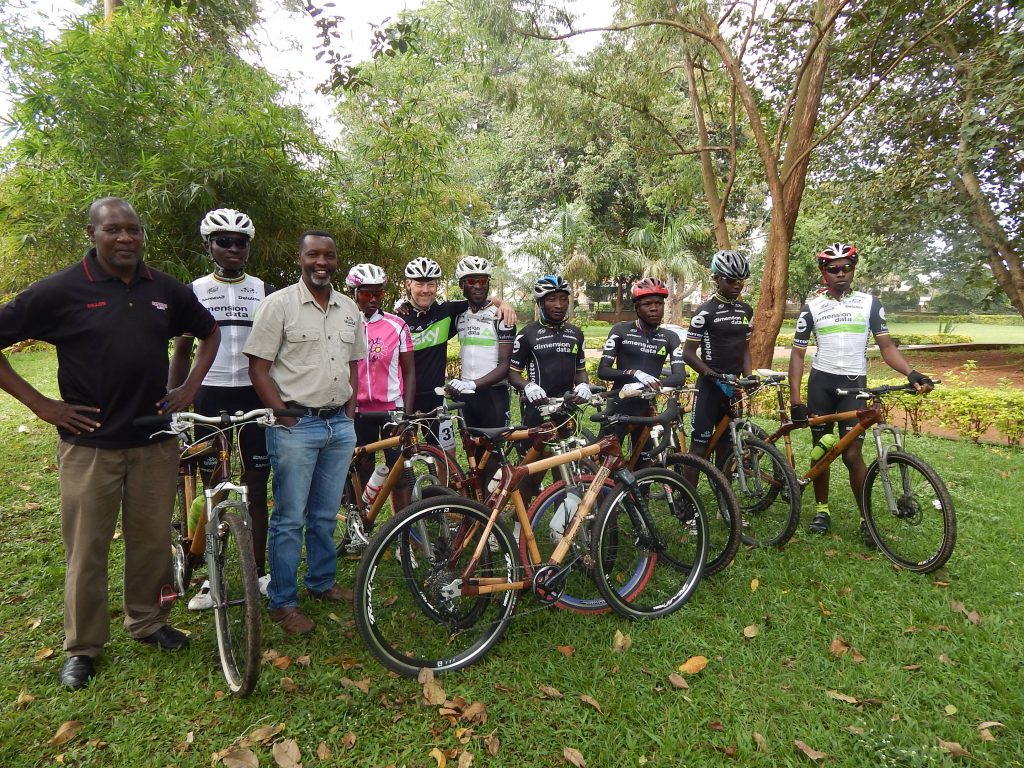
“Bamboo can be an available, scalable solution to some of Uganda’s pressing development challenges, but as in other countries, Uganda’s bamboo sector needs a more supportive policy environment to reach its full potential,” said Charlotte King, INBAR’s communications and press specialist.
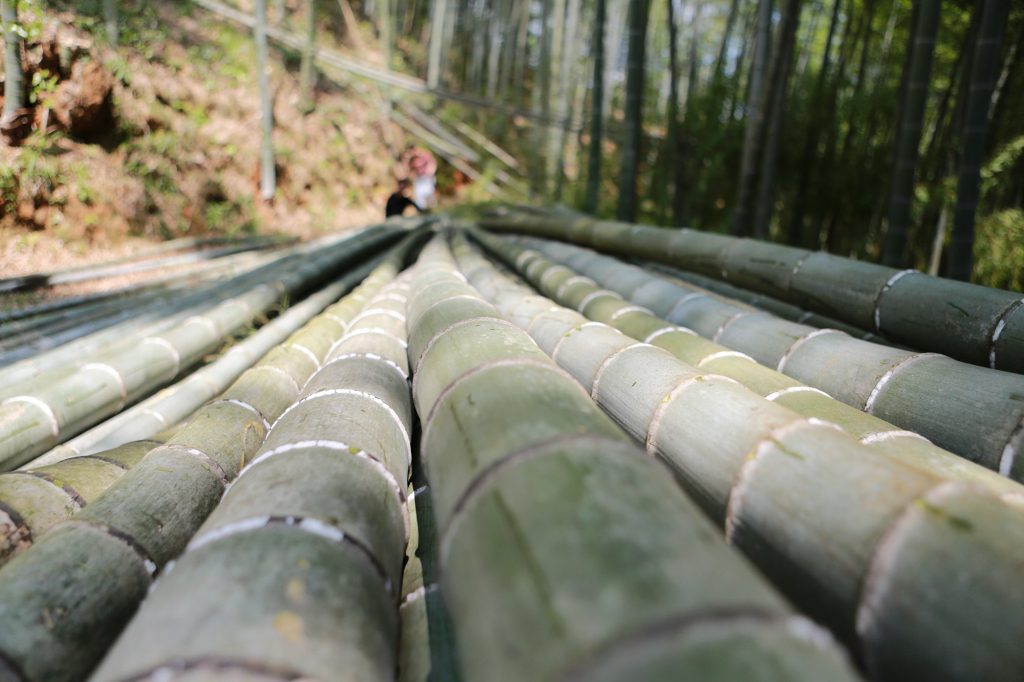
New plan for bamboo
Now, that potential will be more fully tapped, as Uganda begins to implement its National Bamboo Strategy and Action Plan for 2019–2029. With technical and financial support from INBAR/FTA, the Ugandan Forest Sector Support Division (FSSD), the Ministry of Water and Environment (MoWE) and the National Forestry Authority (NFA) developed the strategy in 2019.
Research by INBAR’s Dutch-Sino-East Africa Bamboo Development Programme generated important evidence about the potential significance and contributions of bamboo to sustainable growth in Uganda, informing key aspects of the strategy. This included a regional remote sensing assessment, a property test of indigenous bamboo species, a value chain analysis and training materials.
“The focus of Uganda’s bamboo strategy is on managing the country’s bamboo resources to provide economic, social and environment benefits for all. Its vision, goal, guiding principles, strategic objectives and strategies are all tailored towards achieving a viable and sustainable bamboo industry in Uganda,” said Malinga.
The strategy is in line with international obligations to which Uganda is a signatory, like the UN Sustainable Development Agenda, as well as with national policies and planning frameworks such as the Uganda Vision 2040, the Uganda Forestry Policy 2001, the National Forest Plan 2012, the National Land Use Policy 2013, and the National Energy Policy 2002.
The strategy was approved and released by Hon. Dr Goretti Kitutu Kimono, Uganda’s Minister of State for Environment, on 24 September 2019 in Kampala. “This strategy will go a long way in redeeming the bamboo industry in this country. Bamboo could help Uganda to restore forests and create jobs,” said Dr Goretti.
A collaborative effort
A wide range of stakeholders were involved in the consultative process to develop the Bamboo Strategy and Action Plan. Two national-level stakeholder consultation workshops and a series of internal reviews from task forces, as well as senior management of the Ministry of Water and Environment, National Forestry Authority (NFA) and FTA partner the International Bamboo and Rattan Organisation (INBAR), contributed to the development and validation process.
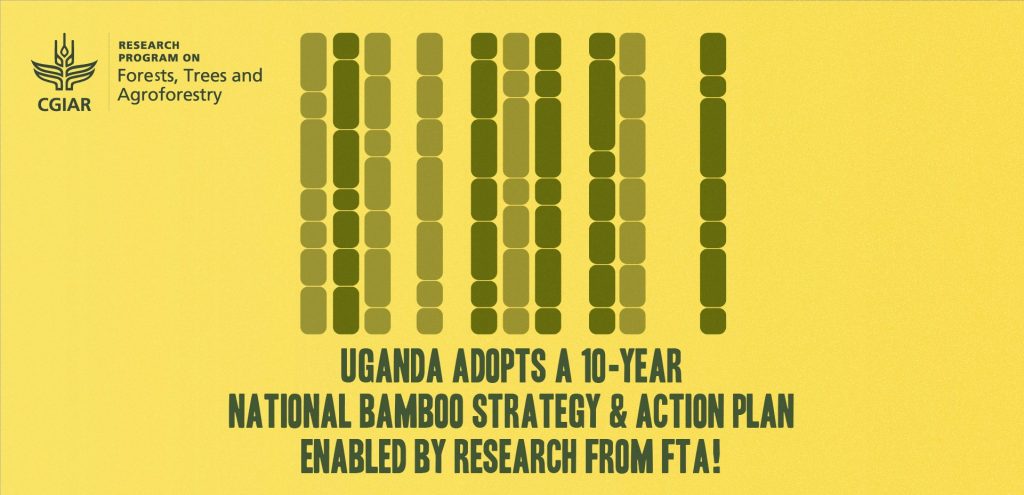
The overall goal of the strategy is to ensure the coordinated development of the bamboo industry to stimulate green economic development and the production of high-value products for domestic, regional and international markets.
Planting and managing bamboo will contribute an estimated 15% towards Uganda’s goal of restoring 2.5 million ha of forest landscape by 2030, of which about 28% will be on government land and the remaining on private land. The Ministry of Water and Environment estimates that the strategy will help create 150,000 full-time jobs, producing 140 million bamboo poles each year.
Long term, this could lead to the creation of 700,000 full time jobs, with 230,000 ha of bamboo planted on farms and 60,000 ha of regenerated natural bamboo forest.
Early growth
Progress is well underway, and Phase II of the Dutch-Sino-East Africa Bamboo Development Programme for Uganda was designed in response to the strategy. Collaborative efforts by various stakeholders are under way to assess the country’s potential for bamboo industrialization. This is expected to supplement the information on suitable species of bamboo.
In 2020, researchers identified bamboo-growing areas and grouped them in the following clusters:
- West Nile
- Mt Elgon
- Western
- Acholi
- South Western
- Karamoja
- Albertine
- Teso
The clusters were ranked according to present status, potential for participating households, bamboo resource base, gender dynamics, current business/marketing practices, and product knowledge and skills, among other criteria. The team also started developing specific clusters for integrated bamboo development, in partnership with the National Forestry Resources Research Institute of Uganda.
The government of Uganda began the process of developing bamboo clusters for small and medium-sized enterprises and industries, tasking an ad hoc committee to develop a plan on how the country will advance the bamboo sector, and also advocate for the inclusion of bamboo in the National Development Agenda.
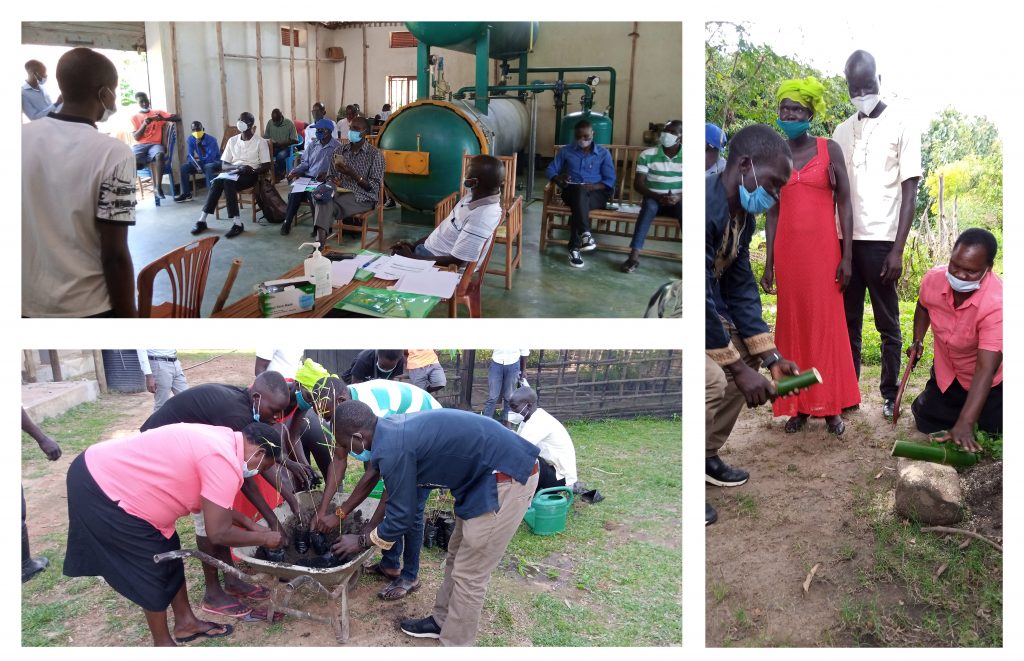
Despite the COVID 19 pandemic, the Ministry of Water and Environment planted nearly 80 ha of bamboo in several districts, along with over 2,000 seedlings in terraces around Echuya Forest Reserve communities to protect their hills from soil erosion. This was done in partnership with INBAR and the United States Agency for International Development (USAID) and local partner the Mgahinga Craft and Cultural Centre.
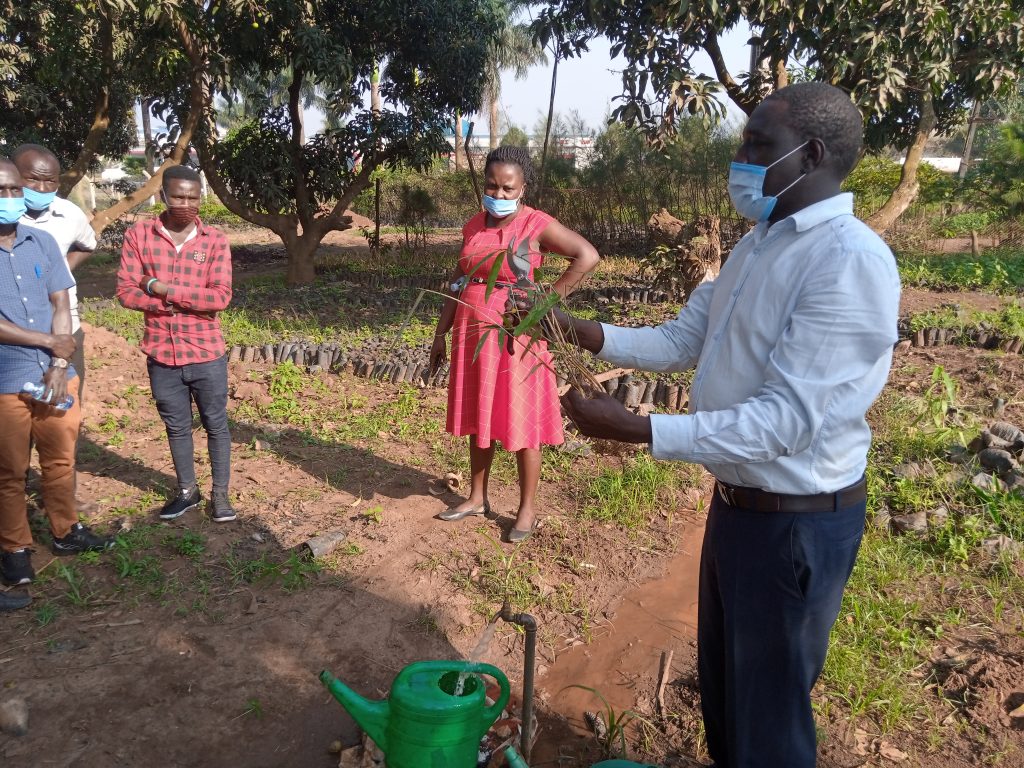
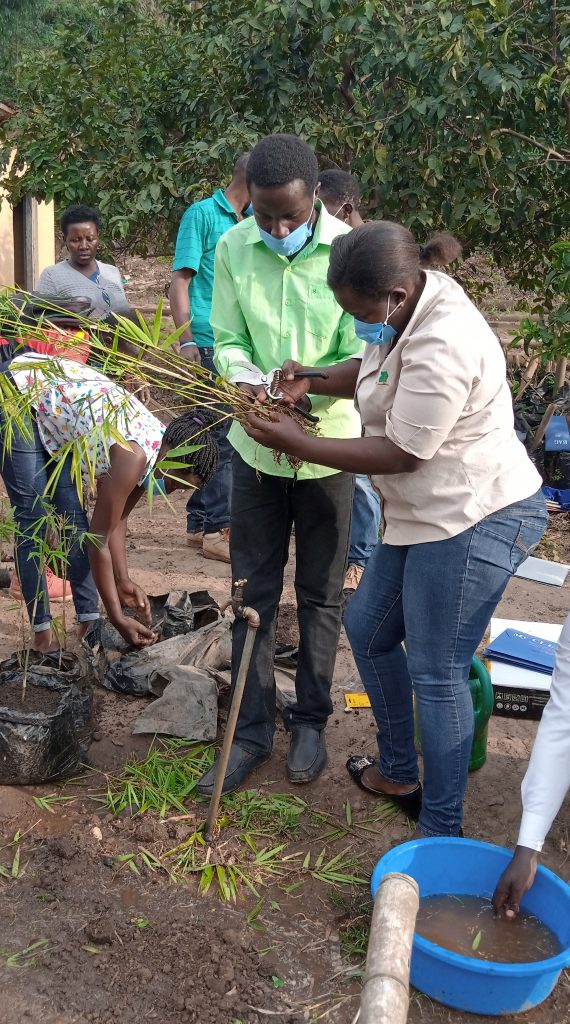
By the end of July 2020, the production of quality bamboo seedlings had reached over 500,000 from government and community-based nurseries, while private enterprises had produced over 2 million seedlings. And by the end of August, 144,000 seedlings were supplied to the refugee-hosting districts of Kikuube and Moyo, of which 29,600 seedlings were planted as a buffer in Bugoma and Era central forest reserves, which are in close proximity to refugee settlements. Seed imports amounted to 16 kg of quality bamboo germplasm, and another 18 kg were already in transit – an amount capable of producing more than 400,000 seedlings.
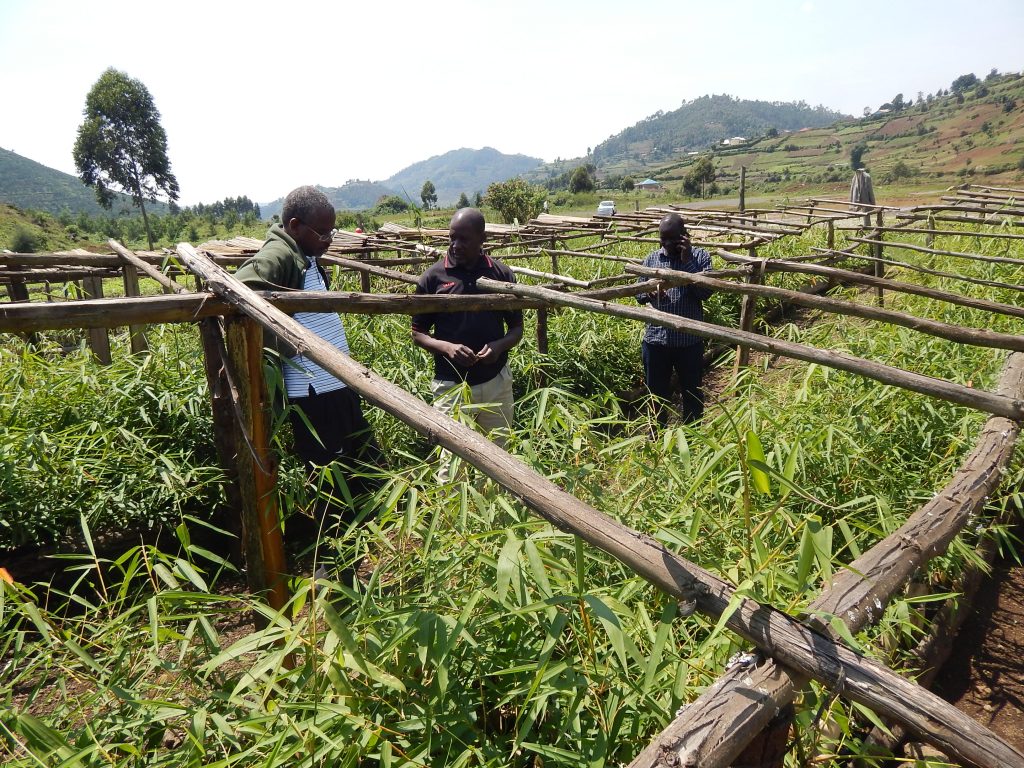
Finally, although the pandemic restrictions limited awareness-raising efforts to virtual channels, INBAR organized 10 online seminars between July and August, around two themes: environmental management of bamboo, and bamboo for poverty reduction and livelihood development. The topic of bamboo also featured in a talk show on the current state of Uganda’s forestry sector on the country’s NBS TV channel.
“INBAR is proud to have worked with Uganda’s Ministry of Water and Environment to support the development of this bamboo strategy, which should be an important step forward for the sector’s development,” said King.
This article was written by Erin O’Connell.
Produced by the CGIAR Research Program on Forests, Trees and Agroforestry (FTA) together with one of its managing partners, the International Bamboo and Rattan Organisation (INBAR). FTA is the world’s largest research for development program to enhance the role of forests, trees and agroforestry in sustainable development and food security and to address climate change. CIFOR leads FTA in partnership with Bioversity International, CATIE, CIRAD, INBAR, ICRAF and TBI. FTA’s work is supported by the CGIAR Trust Fund.











